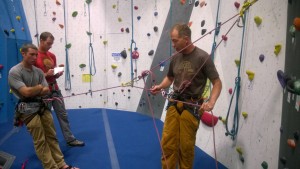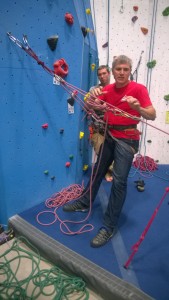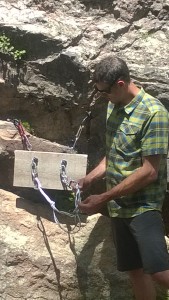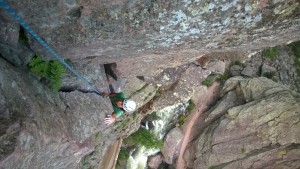James Turner, Recipient of the 2015 Eddie Bauer Scholarship
My life as a climber started bumbling around New England ice falls, reading Kiss or Kill, Ice World, and trying not to epic. I happily relocated to Ouray, Colorado, late in 2001, drawn to the classic ice lines, the mountains, and the rich climbing history of the San Juan Range. Eventually, with the help of a few great mentors, I started figuring things out. I was originally drawn to the area for winter climbing, but when spring came I quickly realized the potential climbing opportunities that the other seasons afforded: getting tutored (or at least schooled) my first times at Indian Creek, growing to love the Black Canyon, and cragging locally on the Western Slope.
Eventually, I took the skills honed in the backyard to the alpine, where my focus lay for a decade. The Cordillerra Blanca, the Ruth Gorge, the Rockies (the Canadian ones eh’—they are a bit superior to their southern brethren), and Patagonia. During this time, I was climbing just to climb. Moving fast, linking pitches, carrying little, and being willing to fail on something big as opposed to possibly cruising something smaller. It was the “uncertainty” of alpine climbing that held appeal to me: Will the route go? Will the weather hold? Should we have brought more or less food and/or gear? During this period, I formed great and lasting relationships with the people I shared the rope with, learning from partners that just a few years before had been and still are heroes to me.
In 2011, I was struck down with a back injury that left me unable to walk and required surgery. It was my friends who I’d climbed with over the past years who helped me in that grim time in my life. After what seemed like an eternity of not doing anything fun, and lots of physical therapy, I decided construction wasn’t very fulfilling for me and started inquiring about guiding. I wanted to give something back, and share mountain experiences with other people, since climbing had enriched my life so much. With a background in both traditional and nontraditional teaching and lots of climbing experience, I began shadowing and eventually guiding in southwest Colorado and southeast Utah. In a few years of guiding, I have had a lot of great feedback on client experiences as well as a few proud personal accomplishments like guiding Fine Jade in Castle Valley and guiding a link-up with two clients of the Ames Ice Hose and Bridalveil Falls in the San Juans.

Releasing a harness belay onto a friction hitch, Rock Guide Course, Boulder, Colorado. Photo: James Turner
I recently was fortunate enough to receive a scholarship from Eddie Bauer, and the AMGA which enabled me to take my first formal guiding course. The Rock Guide Course in Boulder, Colorado, offered fantastic terrain and a great learning environment. With the help of great instructors, I picked up numerous valuable tips that will make the experience of my clients better, as well as fine-tuned some of my self-taught systems, especially short pitching/roping, which I have come to appreciate as quite an art. In addition to this, and combined with the recent incidents in my home range, I have come to be more aware of avoiding the gray areas when it comes to guide safety. By eliminating certain practices, and being more aware of high-consequence activities, we as professionals can greatly reduce the likelihood of incidents, which will result in a much longer and healthier career in the guiding world.
Putting It Together
The day my course ended, we were dismissed early enough that I was able to get in a little mock guiding in Eldorado Canyon. During the course, I had heard some of the instructors mention guiding the “Eldo” classic Bastille Crack in six or seven pitches. Having not been on the route, it seemed a little excessive for a 450′ route. My girlfriend, a novice climber, and I started up the route in the early afternoon. I ended up doing shorter pitches, which enabled me to coach much better and keep her nice and tight during some of the more difficult moves. Sacrificing my comfort for the “client’s” overall enjoyment of the day was well worth i,t and she felt it was a challenging and very rewarding experience for her. She even allowed me to short-rope her down the descent, using the system demonstrated by instructors, which worked much better than other systems I had used in the past. Overall, the skills demonstrated in the Rock Guide Course allowed my “client” to have a much better experience than she would have had just 10 days prior.
The skills and systems demonstrated in the Rock Guide Course were taught in a way that made the students think both linearly and outside the box. I know that the take-away points for me have been and will continue to be implemented in my professional as well as personal climbing. I would like to thank Eddie Bauer and the AMGA for the scholarship that made taking this course possible for me. It will be put to good use, and I look forward to continuing my guiding education with the AMGA.















